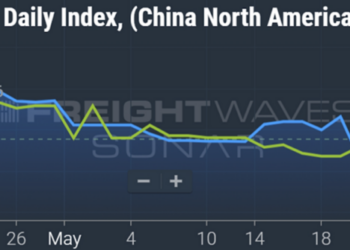It’s Q4 and cargo theft is on the rise. It’s a down market and end of the year, and cargo thefts typically rise this time of year. However, this year CargoNet saw a 59% increase year over year in thefts and pilferage in the U.S. and Canada during the third quarter. The top way goods were ending up in the wrong hands was through “shipment misdirection,” in which thieves were using stolen identities from truckers and freight brokers to get freight from the intended receiver.
FreightWaves’ Mark Solomon’s article says, “Cargo theft, especially strategic thefts, is expected to continue at ‘unprecedented levels’ through year’s end, CargoNet said. … Throughout the year, strategic cargo theft rings have accelerated their efforts during holiday periods, and the upcoming holidays will be no different.”
Top targets are loads containing copper, brass, aluminum, licensed sports apparel and personal care and beauty products. It cannot be stated enough that driver safety is the No. 1 thing. Work with carrier partners to make sure drivers are practicing safe habits. No load is worth a driver’s life. And especially now closing out the year, it’s crucial to validate carriers’ insurance as it’s not a matter of if something happens, it’s a matter of when.
Those who dabble in international freight or container shipping, I’ve got some bad news: The Panama Canal is still limiting the number of ships able to pass daily. There doesn’t seem to be an end in sight for when the canal will lift the restriction. The pain of the canal has been felt in the various sectors for a while, but the new industry that is feeling the effects is the grain market.
The U.S. primarily exports grain via container ship. The main route from the U.S. Gulf travels through the Panama Canal to Asia. Due to the drought, exporters have had to look to alternative routes such as the Suez Canal. Ships now are leaving the U.S. Gulf Coast, traveling across the Atlantic Ocean, going through the Suez Canal in Egypt, through the Red Sea to come out in the Indian Ocean and then sail up to China. Since it is an arguably longer route, it adds about 10 days onto the journey and many more miles.
For those shipping commodities via dry container, this situation is far from resolved as Panama still has restrictions and the escalation of conflicts near the Suez Canal could create additional problems with the Suez option. Here’s hoping Panama gets a lot of rain in the near future to bring some normalcy back to container shipping.
Trac Tuesday. This week’s TRAC lane of the week is from one top freight market to another, from Allentown, Pennsylvania, to Atlanta. The 785-mile trip comes in 48 cents cheaper than the National Truckload Index. Outbound tender volumes in Atlanta have risen 7.28% week over week. The same can’t be said for Allentown, as outbound tender rejections have dropped 3.14%. As a result of both markets rising and falling at close rates, that has pretty much brought spot rates to a standstill. The one good thing is that a carrier heading into either of these markets should have little issues getting out of the market.
Who’s with whom? The U.S. government is with the truck drivers. That’s a sentence I never thought I’d type. However, two Democratic senators and a bipartisan team of two House representatives are pushing for a bill that would give truck drivers the right to overtime pay. Currently drivers aren’t subject to overtime pay as they are exempt from the 1938 law guaranteeing overtime pay to workers who work more than 40 hours a week.
The bill has been proposed and it still has to go through committee review before potentially going for a vote in the House and the Senate. The industry is mixed about it. The Owner-Operator Independent Drivers Association, Teamsters union, Truck Safety Coalition and the Institute for Safer Trucking support the bill while the American Trucking Associations is against it on the grounds that it would throw the supply chain into chaos and increase impacts for inflation.
FreightWaves’ Rachel Premack’s article says, “Studies suggest that increasing pay for truck drivers reduces crash count. Reducing uncompensated work, like the hours that drivers often spend unpaid waiting at warehouses to get loaded or unloaded, also is a boon for safety and overall supply chain efficiency, studies suggest.”
The more you know
Fillogic closes $13M Series A, grabs third spot on FreightTech 25
Daily Infographic: US holiday spending to climb 3%-4% over 2022, NRF predicts
Diminished inventories may boost holiday expediting
Lawyers will square off on California trucking’s latest AB5 exemption request
Trucks and teen motorists a dangerous mix, NTSB panelists say
See you on the internet.
MaryJoin the community in freight and subscribe for more at freightwaves.com/subscribe.
The post Check Call: November steals appeared first on FreightWaves.














